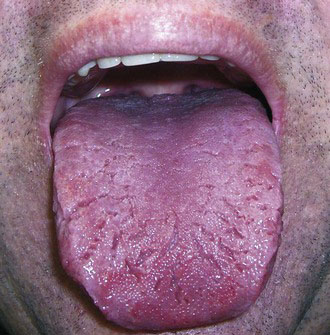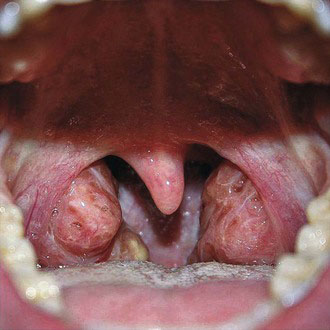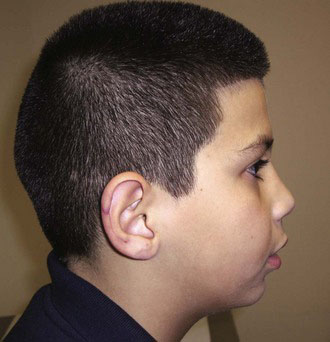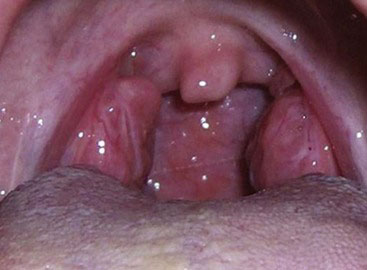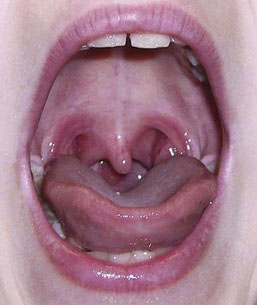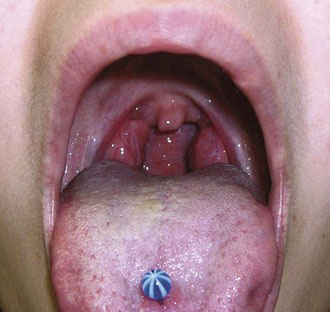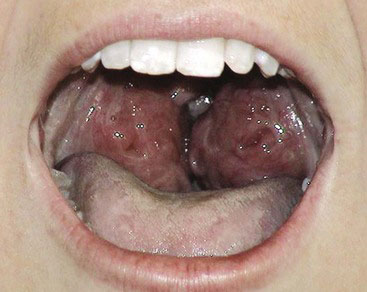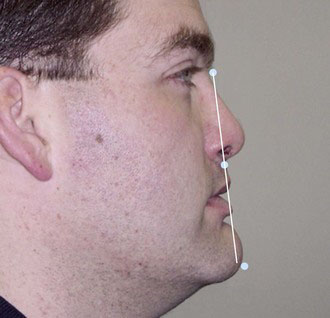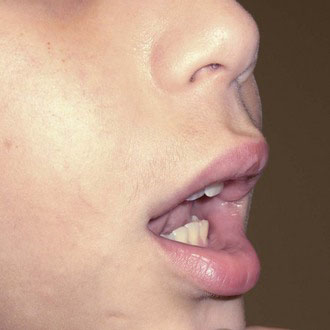Section 3 Sleep Evaluation
A 4-year-old with Restless Sleep and Snoring
An 8-year-old with Attention-Deficit/Hyperactivity Disorder
A 74-year-old man comes to the office with his wife. He has daytime sleepiness, with an Epworth score of 14/24. His BMI is 24.5. He does not snore, but his wife notes that he moves his legs a great deal at night. “He kicks off the covers all the time, and keeps jerking his legs,” she says. He has no trouble initiating sleep but frequently gets up to go the bathroom. Sometimes he awakens in the middle of the night when he doesn’t have to urinate, and just lies in bed for a few minutes until he falls asleep again. When he gets out of bed in the morning he doesn’t feel refreshed. He takes oral medication for type 2 diabetes.
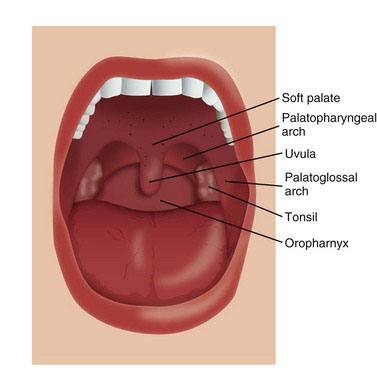
FIGURE 3.1–5 Answer 4.
(Adapted from Netter F: Atlas of human anatomy, ed 5, St Louis, 2001, Saunders. 2011, plate 51).
Summary
This topic, history and physical examination, will be addressed in about 12 questions on the examination but it covers a great deal of clinical knowledge. Some of the information reviewed here will also be covered when testing for knowledge about specific disorders described elsewhere in this book. The reader must know in detail all of the terms in the outline below because many will be used in clinical vignettes on the exam.
Cardinal Manifestations on History
Key Findings on Physical Examination
Sleep Breathing Disorders (Atlas ch 11.1)
 Obstructive sleep apnea
Obstructive sleep apnea Abnormal skeletal anatomy
Abnormal skeletal anatomy Crowding of oropharyngeal cavity
Crowding of oropharyngeal cavityBox 3.1–1 About Mallampati Scores
There is confusion about how to document the Mallampati score: is it using a class or grade?
Mallampati in 1985 published classes 1 to 3 to describe the oral findings in an attempt to predict possible difficulty in intubation (Mallampati et al, 1985). What is used currently and called a Mallampati score is actually the original score modified by Friedman’s group, which described Grades 1 to 4 (Friedman et al, 1999).
Bruxism
Box 3.1–2 Don’t Forget
American Academy of Sleep Medicine. The AASM manual for the scoring of sleep and associated events: rules terminology and technical specifications. Darien, IL: American Academy of Sleep Medicine; 2007.
American Academy of Sleep Medicine. International classification of sleep disorders: diagnostic and coding manual. Westchester, IL: American Academy of Sleep Medicine; 2005.
Friedman M, Tanyeri H, La Rosa M, et al. Clinical predictors of obstructive sleep apnea. Laryngoscope. 1999;109:1901-1907.
Katz I, Stradling J, Slutsky AS, et al. Do patients with obstructive sleep apnea have thick necks? Am Rev Respir Dis. 1990;141(5 Pt 1):1228-1231.
Kryger MH. Atlas of clinical sleep medicine. Philadelphia: Saunders; 2010.
Lipton AJ, Gozal DG. Obstructive sleep apnea in children: do we really know how? Sleep Med Rev. 2003;7:61-80.
Mallampati SR, Gatt SP, Gugino LD, et al. A clinical sign to predict difficult tracheal intubation: a prospective study. Can Anaesth Soc J. 1985;32:429-434.
Nuckton TJ, Glidden DV, Browner WS, Claman DM. Physical examination: Mallampati score as an independent predictor of obstructive sleep apnea. Sleep. 2006;29:903-908.
3.2 Polysomnography: Methods, Rules, and Event Scoring

